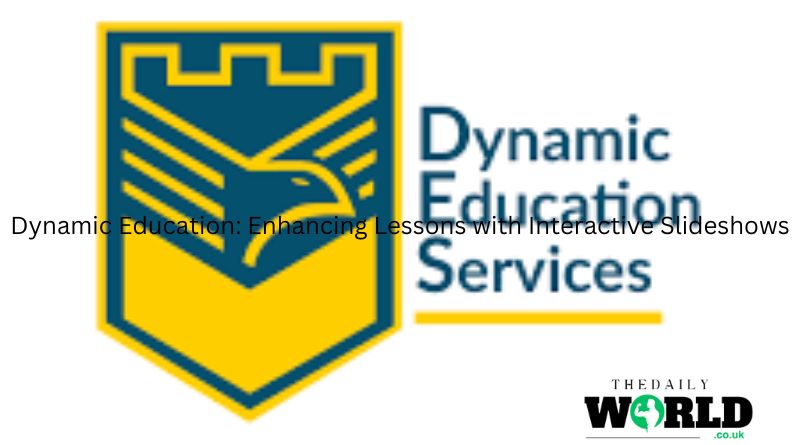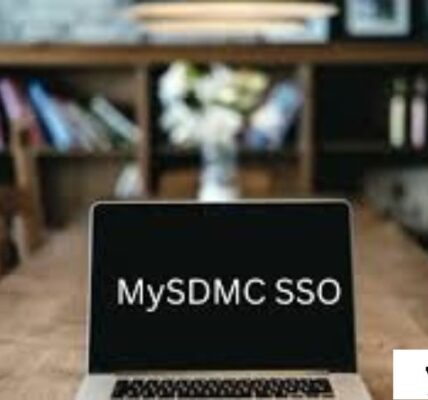Education is undergoing a transformation with the integration of technology, and one of the most impactful innovations is the use of interactive slideshows in classrooms. Known as “Dynamic Education,” this approach is changing how students engage with lessons, making learning more interactive, personalized, and effective. This article explores how interactive slideshows are enhancing education and why they are becoming an essential tool for modern educators.
The Evolution of Teaching Methods
Traditional teaching methods have relied heavily on lectures, textbooks, and static presentations. While these methods have been effective for decades, they often fail to capture the attention of today’s tech-savvy students. The rise of digital tools has paved the way for more dynamic teaching approaches, enabling educators to create more engaging and interactive lessons.
Interactive slideshows represent a significant shift in how information is delivered in the classroom. Unlike traditional slideshows that simply present information, interactive slideshows allow students to actively participate in the lesson. They can click through content at their own pace, answer questions, watch embedded videos, and even engage in real-time discussions with their peers. This shift from passive to active learning is at the core of Dynamic Education.
The Benefits of Interactive Slideshows
Interactive slideshows offer numerous benefits, both for students and teachers. For students, these slideshows provide a more engaging learning experience. Instead of simply listening to a lecture or reading from a textbook, students can interact with the content, which helps to reinforce learning and improve retention. The interactive elements, such as quizzes, polls, and games, keep students engaged and make learning more enjoyable.
For teachers, interactive slideshows offer a powerful tool for delivering content in a way that is both effective and efficient. Teachers can easily incorporate multimedia elements such as videos, audio clips, and animations to illustrate complex concepts and make lessons more vivid. Additionally, the ability to track student progress through interactive features allows teachers to identify areas where students may be struggling and provide targeted support.
Moreover, interactive slideshows can be easily updated and customized to fit the needs of different classes or individual students. This flexibility is particularly valuable in today’s diverse classrooms, where students have varying levels of ability and learning styles. By tailoring slideshows to the specific needs of their students, teachers can create a more inclusive learning environment that supports all learners.
Enhancing Student Engagement and Participation
One of the key advantages of Dynamic Education is its ability to enhance student engagement. Interactive slideshows encourage active participation, which has been shown to improve learning outcomes. When students are actively involved in the learning process, they are more likely to retain information and apply it in real-world situations.
Interactive slideshows also promote collaboration among students. Many interactive tools allow for group activities, where students can work together to solve problems or complete tasks. This collaborative approach not only enhances learning but also helps to build important social and teamwork skills.
In addition to promoting engagement, interactive slideshows can also help to address different learning styles. Some students may be visual learners who benefit from images and videos, while others may be auditory learners who prefer listening to explanations. By incorporating a variety of multimedia elements, interactive slideshows can cater to these different learning preferences, making lessons more accessible to all students.
The Role of Technology in Dynamic Education
Technology plays a crucial role in the implementation of Dynamic Education. The use of interactive slideshows is made possible by a variety of digital tools and platforms, which have been specifically designed for educational use. These tools enable teachers to create and share interactive content with ease, without the need for advanced technical skills.
One of the most popular platforms for creating interactive slideshows is Google Slides, which offers a range of features for adding interactivity to presentations. Teachers can embed videos, insert hyperlinks, and create interactive elements such as quizzes and polls. Other platforms, such as Near pod and Pear Deck, offer even more advanced features, including real-time feedback and data analytics.
These platforms also offer integration with other digital tools, such as learning management systems (LMS) and educational apps. This integration allows for a seamless learning experience, where students can access all of their learning materials in one place. Additionally, the use of cloud-based platforms means that students can access interactive slideshows from any device, whether they are in the classroom or learning remotely.
Challenges and Considerations
While Dynamic Education offers many benefits, it is not without its challenges. One of the main challenges is ensuring that all students have access to the necessary technology. In some cases, students may not have access to a reliable internet connection or a suitable device for viewing interactive slideshows. Schools and educators must work to address these issues to ensure that all students can benefit from Dynamic Education.
Another challenge is the need for teacher training. While many teachers are familiar with traditional presentation tools, they may not have experience with creating interactive slideshows. Providing training and support for teachers is essential to ensure that they can effectively use these tools in their classrooms.
Finally, there is the issue of screen time. While interactive slideshows can make learning more engaging, there is a risk of students spending too much time in front of screens. Educators must strike a balance between using digital tools and incorporating other forms of learning, such as hands-on activities and face-to-face discussions.
The Future of Dynamic Education
The future of Dynamic Education is bright, with interactive slideshows set to play an increasingly important role in classrooms around the world. As technology continues to advance, we can expect to see even more innovative features and tools that will further enhance the learning experience.
One area of development is the use of artificial intelligence (AI) in interactive slideshows. AI has the potential to personalize learning experiences even further, by adapting content based on a student’s progress and performance. This could lead to truly individualized learning, where each student receives a unique learning experience tailored to their needs.
Another area of growth is the use of virtual and augmented reality (VR and AR) in education. These technologies offer exciting possibilities for creating immersive learning experiences, where students can explore virtual environments and interact with content in new ways. When combined with interactive slideshows, VR and AR could revolutionize the way we teach and learn.
Conclusion
Dynamic Education, through the use of interactive slideshows, is transforming the way we teach and learn. By making lessons more engaging, interactive, and personalized, this approach is helping to improve student outcomes and create a more inclusive learning environment. While there are challenges to be addressed, the benefits of Dynamic Education are clear, and its future is full of promise. As technology continues to evolve, we can look forward to even more innovative tools and approaches that will further enhance the learning experience.
Read also: check













